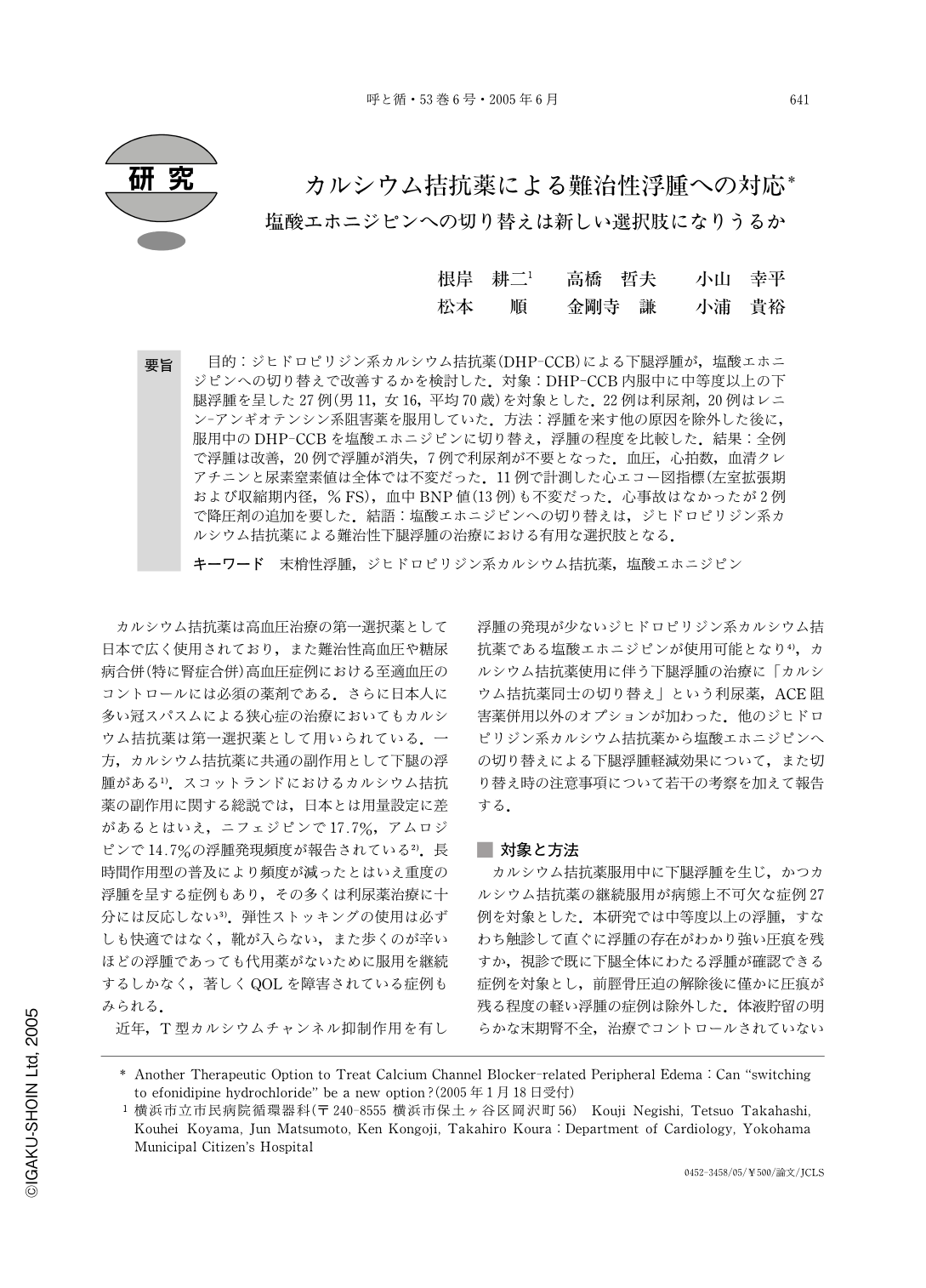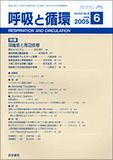Japanese
English
- 有料閲覧
- Abstract 文献概要
- 1ページ目 Look Inside
要旨 目的:ジヒドロピリジン系カルシウム拮抗薬(DHP-CCB)による下腿浮腫が,塩酸エホニジピンへの切り替えで改善するかを検討した.対象:DHP-CCB内服中に中等度以上の下腿浮腫を呈した27例(男11,女16,平均70歳)を対象とした.22例は利尿剤,20例はレニン-アンギオテンシン系阻害薬を服用していた.方法:浮腫を来す他の原因を除外した後に,服用中のDHP-CCBを塩酸エホニジピンに切り替え,浮腫の程度を比較した.結果:全例で浮腫は改善,20例で浮腫が消失,7例で利尿剤が不要となった.血圧,心拍数,血清クレアチニンと尿素窒素値は全体では不変だった.11例で計測した心エコー図指標(左室拡張期および収縮期内径,%FS),血中BNP値(13例)も不変だった.心事故はなかったが2例で降圧剤の追加を要した.結語:塩酸エホニジピンへの切り替えは,ジヒドロピリジン系カルシウム拮抗薬による難治性下腿浮腫の治療における有用な選択肢となる.
Summary
Peripheral edema, especially leg edema, is a troublesome adverse effect of dihydropyridine calcium channel blocker(DHP-CCB). Efonidipine Hydrochloride, a kind of DHP-CCB which blocks L-and T-type calcium channels, is rarely(less than 1% of the users) associated with peripheral edema. Twenty-seven patients(11 males, 16 females, mean age 70) suffering severe CCB-related leg edema(including 22 diuretics users and 20 with ACE inhibitor and/or angiotensine receptor blocker) were selected. They could not discontinue DHP-CCB because of refractory hypertension or coronary spasm. We switched the DHP-CCBs(they had taken) to efonidipine hydrochloride and observed the effects on cheir clinical symptoms. In all 27 patients, the edemas diminished or disappeared. In 7 patients, diuretics were no more necessary to control their leg edema. Systolic (146±4, 145±3mmHg: p=0.78)and diastolic blood pressure(81±3, 78±3mmHg: p=0.29), heart rate(74±2, 72±2/min: p=0.053) and the values of serum creatinine(1.38±0.28,1.38±0.26mg/dl: p=0.97) and blood urea nitrogen(24±3, 29±5mg/dl: p=0.37) were unchanged by the switching. Left ventricular end diastolic(49±1, 49±1 mm: p=0.67) and end systolic dimension(32±2, 33±2mm: p=0.17), fractional shortening(0.35±0.02, 0.34±0.02: p=0.61) by echocardiogram in 11 patients and values of BNP(brain natriuremic peptide) (73±17, 75±17pg/ml: p=0.60) measured in 13 patients, were also unchanged. There were no cardiac or extracardiac adverse events associated with the switching. But in two patients, the systolic blood pressure increased by more than 20mmHg and antihypertensive drugs were added, while in another two patients, the systolic blood pressure decreased by more than 20mmHg and the dose of efonidipine hydrochloride was reduced in one case.
Conclusions: Switching from other kinds of dihydropyridine calcium channel blockers to efonidipine hydrochloride improved peripheral(especially leg) edema without any severe adverse events. This effect was not induced through improvement of cardiac function. This method may be a therapeutic option for intolerable leg edema before withdrawal of dihydropyridine calcium channel blocker.

Copyright © 2005, Igaku-Shoin Ltd. All rights reserved.


